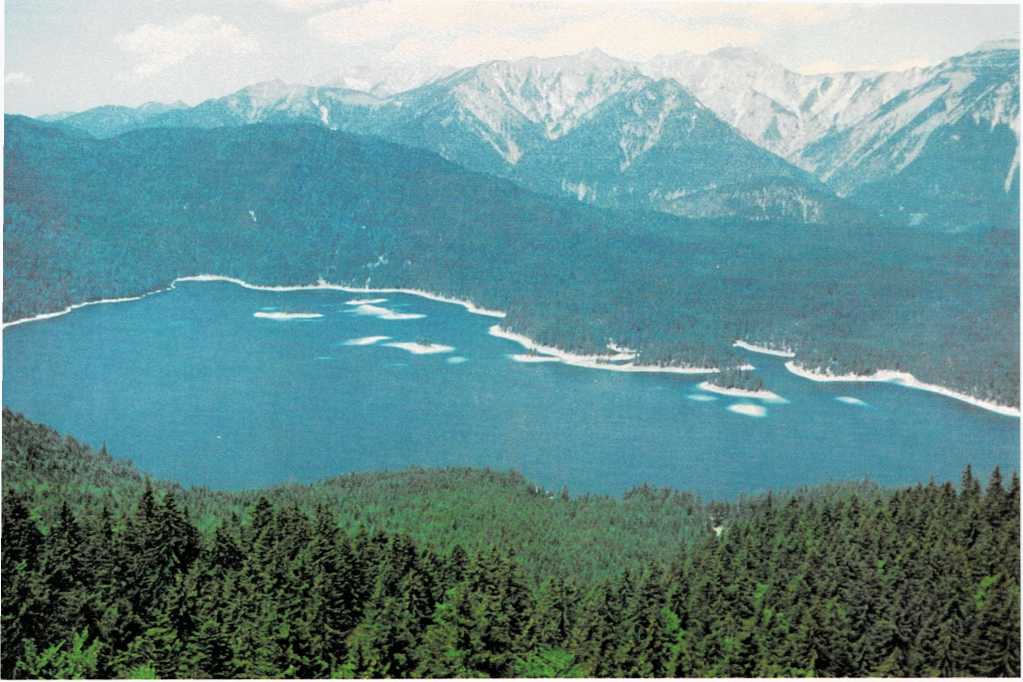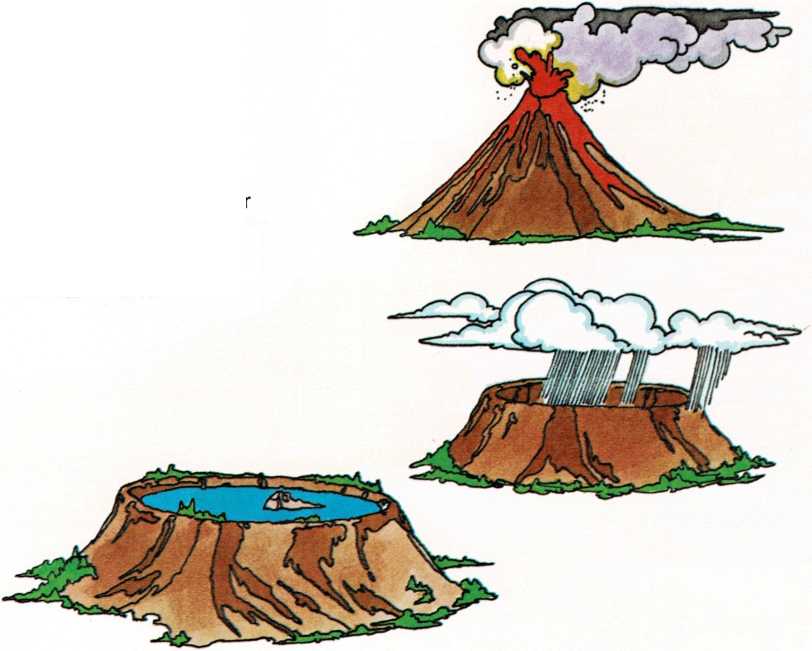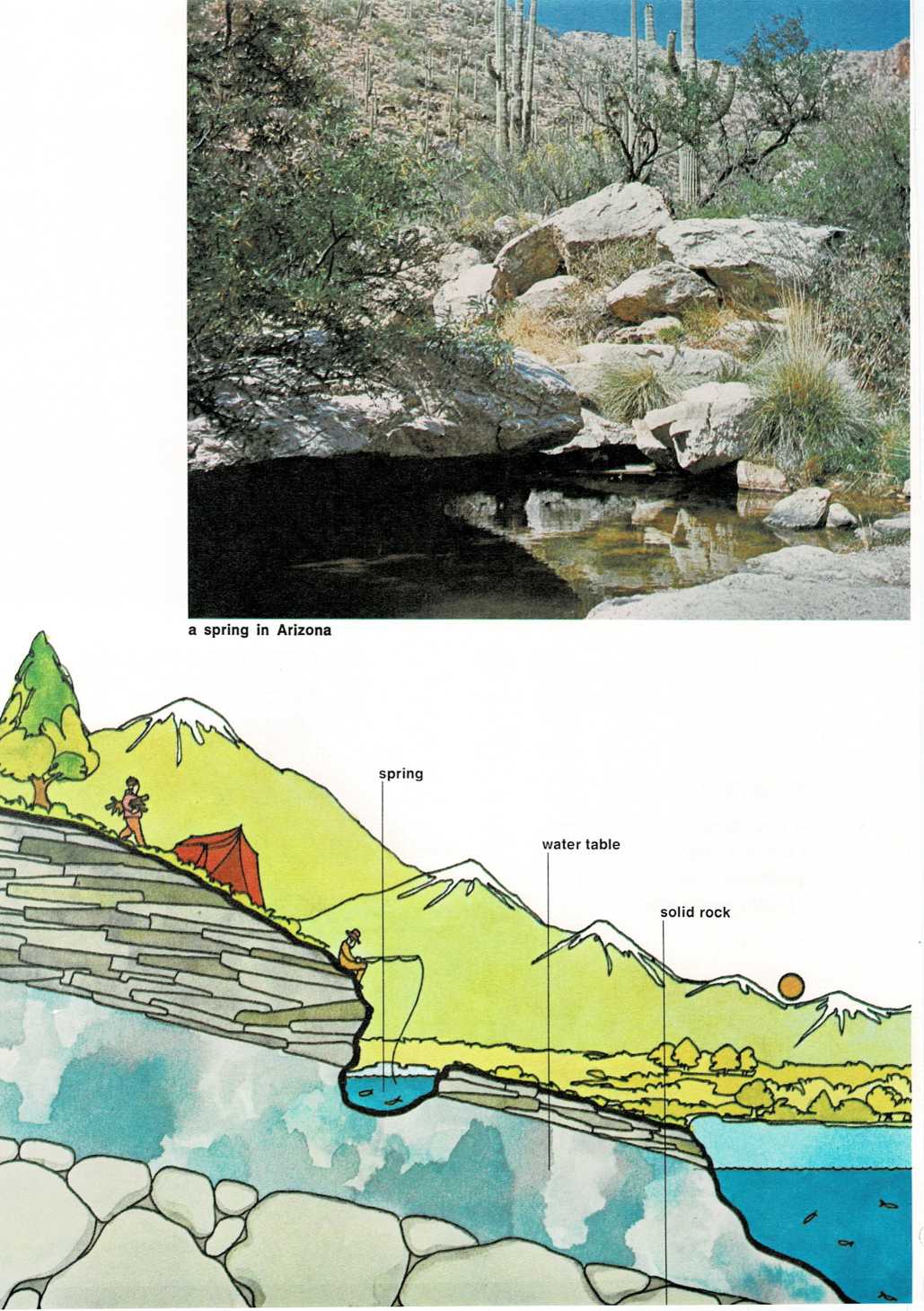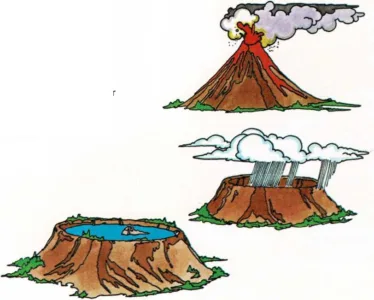Holes full of water
A lake is the exact opposite of an island. An island is a piece of land
that has water all around it. A lake, or a pond, is water that has land
all around it. Some of the places we call seas, such as the Dead Sea,
are really lakes, because there is land all around them.
Most lakes are just holes in the ground that are filled with water. Many
such holes were dug by glaciers. Long ago, these huge rivers of ice
flowed out of the north and covered many parts of the world. As the
gigantic glaciers slid slowly along, they gouged out great pits and made
valleys wider and deeper. Then, when the glaciers began to melt, the
water filled up many of the holes, forming lakes.
Some lakes form when part of the earth caves in, leaving a hole. This
happens mostly in places where the ground is limestone. Year after year,
rain dissolves away the soft limestone. As the rainwater trickles
through the limestone, underground caves and tunnels form. Finally, the
tops of these tunnels cave in, leaving what is called a sinkhole. Rain,
or water from underground springs and streams, fills the sinkhole and it
becomes a lake or pond.
Part of a river can also become a lake. Sometimes a river deposits so
much mud and sand that the water backs up and forms a natural lake. Or,
people may make a lake by building a dam that causes the flowing water
to spread out over the river’s banks.
Some lakes were once volcanoes 1 They formed when the craters of dead
volcanoes filled up with rain water.

a lake in Germany
It’s a Fact
A few lakes, such as Crater Lake in Oregon, are dead volcanoes that have
filled up with rain water.



